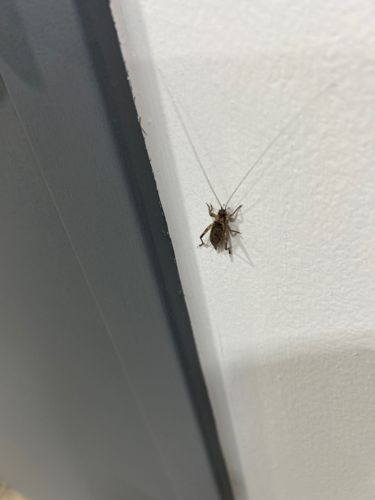Cave Cricket / Camel Cricket
Scientific Name: Various genera within Rhaphidophoridae, e.g., Ceuthophilus
Order & Family: Orthoptera, Rhaphidophoridae
Size: Generally 1/2 inch to 1.5 inches (1.2 to 3.8 cm) in body length, excluding their long antennae.

Natural Habitat
Typically found in cool, dark, and damp environments such as caves, basements, cellars, crawl spaces, hollow logs, and under rocks. They are common indoors in moist areas.
Diet & Feeding
Omnivorous scavengers. They feed on decaying organic matter, fungi, plants, dead insects, fabric, wood, and sometimes even other crickets.
Behavior Patterns
Nocturnal and highly sensitive to light, preferring dark conditions. They are known for their long antennae and legs, which help them navigate in dark environments. Unlike true crickets, most cave crickets do not have wings and therefore do not chirp. They are often jumpy when startled.
Risks & Benefits
Potential Risks: Primarily a nuisance pest when indoors. They can damage household items like fabrics, wood, and stored goods, especially in damp conditions. They do not bite or transmit diseases to humans. Potential Benefits: In their natural outdoor habitats, they contribute to decomposition as scavengers, breaking down organic matter. They can also be a food source for other animals.
Identified on: 9/11/2025